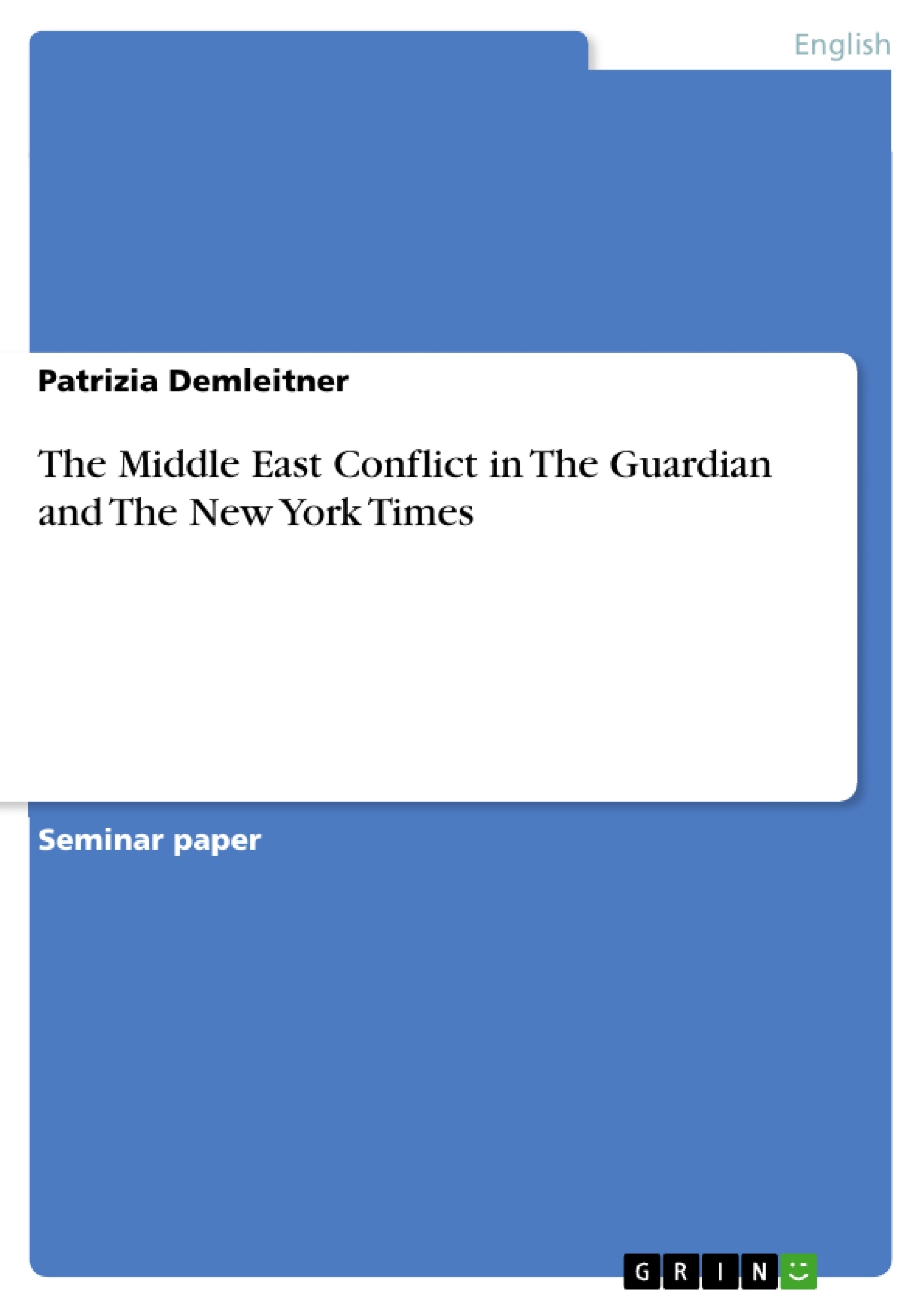Mark Twain once said, “If you don’t read the newspaper, you are uninformed; if you do read the newspaper, you are misinformed”. Indeed, it’s true that most newspapers tend to be biased and to represent a certain ideology. Nearly imperceptible, the newsmaker leaves marks or hints of his attitude and ideology in his work and thus very often looses the independence and objectivity that news reporting ought to have. Evidence can be found for example in the choice of vocabulary, the sentence structure or the narrative structure of an article. This analysis wants to examine and compare two leading newspapers, the Guardian and the New York Times, with regard to bias in the way they are treating the Middle-East conflict.
For a long time, the violence in the Middle East and the conflict between Israelis and Palestinians have been a common topic in the news and therefore it is important to know how far the reader can rely on an objective point of view when events are reported. Not a day goes by without a headline dealing with peacemaking efforts or a new attack of a suicide bomber or another advance of the Israeli army on Palestinian ground. I want to verify the hypotheses that the Guardian takes a rather anti-Israeli position about which even its own reporters state that it is “so anti-Israeli it (is) embarrassing” , whereas the New York Times will probably be in favour of Ariel Sharon and Israel.
After a short overview of the two newspapers, the topic will be introduced briefly. This will be followed by a linguistic analysis of a selection of articles which will focus on features with regard to the linguistic approach of critical linguistics and social semiotics of Roger Fowler (Fowler 1991). In the centre of attention will be the correlation of news language and its linguistic features within a social and ideological context. Finally, a conclusion will sum up and critically examine the results of the research done concerning the hypotheses of bias.
Table of Contents
- Introduction
- The Guardian and The New York Times: An Overview
- The Middle East Conflict: A Chronological Record
- Procedure and Approach of Analyses
- Material
- Linguistic Analysis of a Selection of Articles
- Transitivity / Semantic Roles
- Headlines
- Leads
- Remaining Article
- Lexical Structure
- Connotations and Images
- Naming Devices
- Discourse Structure
- Speech Acts
- Direct and Indirect Quotes
- Transitivity / Semantic Roles
Objectives and Key Themes
This research project aims to analyze the linguistic features of news reporting on the Middle East conflict in two leading newspapers, The Guardian and The New York Times. The goal is to examine and compare the potential biases present in their coverage and to explore whether these biases are reflected in the linguistic choices made by the reporters.
- Linguistic Features in News Reporting
- Bias in News Coverage
- The Middle East Conflict
- The Guardian and The New York Times
- International Perspectives on Conflict
Chapter Summaries
- Introduction: The chapter introduces the research project, highlighting the prevalence of bias in news reporting. It discusses the role of linguistic features in conveying ideology and the importance of understanding how different newspapers present the Middle East conflict.
- The Guardian and The New York Times: An Overview: This chapter provides a brief overview of the two newspapers, including their history, ownership, readership, and editorial stance. It also discusses their role as influential voices in international news.
- The Middle East Conflict: A Chronological Record: This chapter presents a concise timeline of key events in the Middle East conflict from April to June 2002, providing context for the linguistic analysis that follows.
- Procedure and Approach of Analyses: This chapter outlines the methodology and analytical framework used in the research. It explains the concepts of critical linguistics and social semiotics, which are employed to examine the linguistic features of the selected articles.
- Material: This chapter describes the selection of articles used in the analysis, providing information about the specific articles and their relevance to the research objectives.
- Linguistic Analysis of a Selection of Articles: This chapter presents the detailed analysis of the selected articles, focusing on features related to transitivity, lexical structure, and discourse structure. It examines how these linguistic features contribute to the potential bias in the news coverage.
Keywords
The main keywords and focus topics of this research project include news reporting, linguistic features, bias, ideology, Middle East conflict, The Guardian, The New York Times, critical linguistics, social semiotics, transitivity, lexical structure, discourse structure, headlines, leads, semantic roles, connotations, naming devices, speech acts, direct and indirect quotes.
- Quote paper
- Patrizia Demleitner (Author), 2002, The Middle East Conflict in The Guardian and The New York Times, Munich, GRIN Verlag, https://www.grin.com/document/58583



